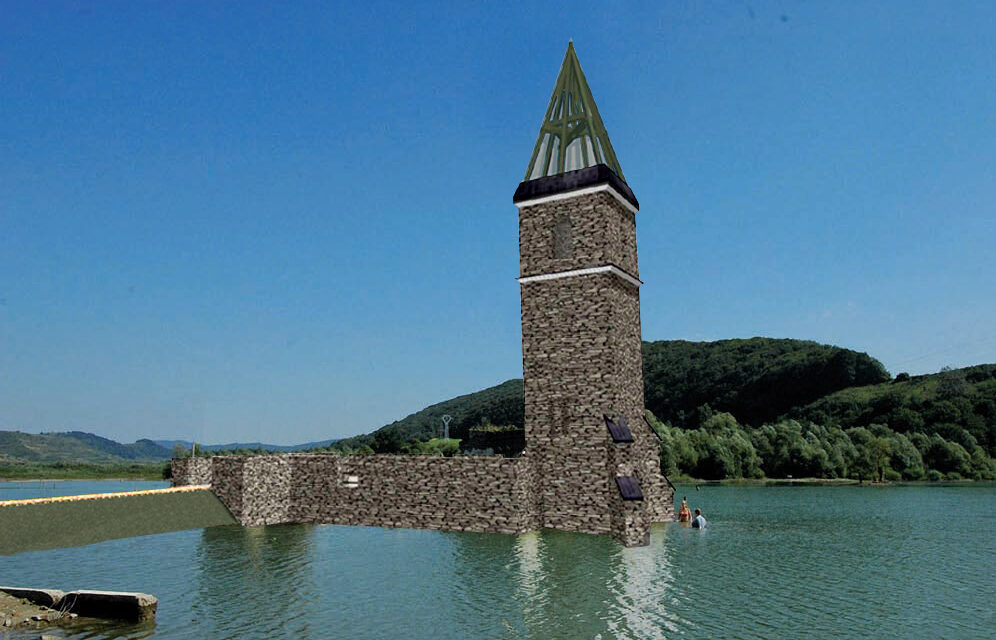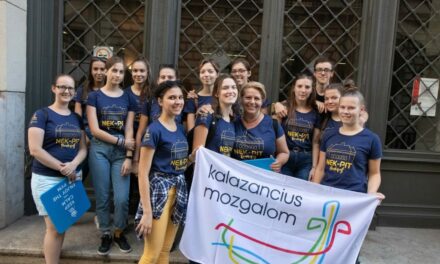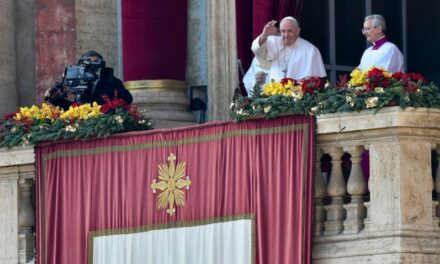In August, the church on the banks of the lake in Bözödújfalu in Transylvania will be consecrated in memory of the village that was flooded during the communist dictatorship and those forced to flee there. The house of god, built from public donations, represents all the denominations of the flooded settlement, which is why it is called the church of togetherness.
The Church of Belonging, which was also planned to replace the former Roman Catholic church, began to be built in 2018, but due to the coronavirus epidemic and financial deficiencies, its construction was delayed. According to the report of the Székelyhon portal, the church has been almost completely rebuilt, only the stairs leading to the tower are missing.
On the first weekend of August, at a meeting of the residents of the former Bözödúj Village, the church of unity will be inaugurated in the flooded Transylvanian settlement, Attila Zoltán Csibi, mayor of Erdőszentgyörgy, announced to Marosvásárhely Radio on Wednesday.
The municipality of the small town in Maros County and the Bözödújfaluért Association announced in 2017 that they would rebuild the Catholic church that collapsed in 2014 with public donations. On Monday, the tower helmet was put on the rebuilt church, said the superior.
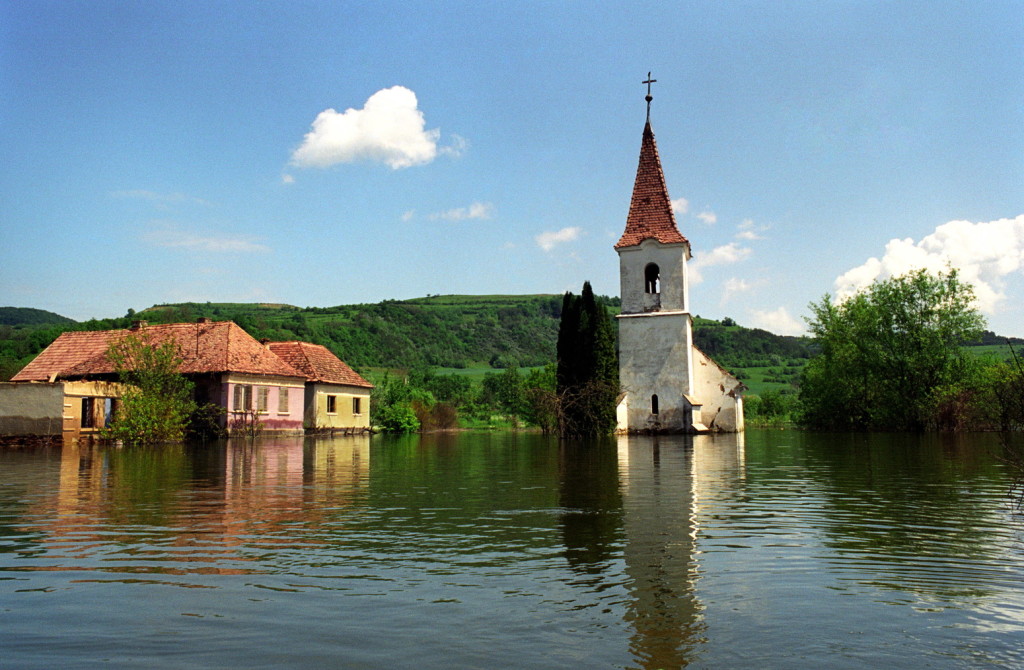
Bóződújfalu, a victim of the village-destroying policy of the Ceausescu dictatorship (hirado.hu)
Zoltán Attila Csibi recalled:
the need to rebuild the church was already formulated at the Bözöuj village meeting held in the year of the collapse.
The former residents feared that the settlement's "fame would also be lost" if there was no messenger to remind them of it. "That's when the bold idea to build a symbol was born," said the mayor.
Said,
the house of god built from public donations represents all the denominations of the flooded settlement, which is why it is called the church of togetherness.
Donations came from many countries, from Canada to Australia, and in addition to donors from Transylvania and the motherland, the municipalities of Maros County and Hungary also supported the plan. According to Attila Zoltán Csibi, the final value of the donations still arriving is estimated at between 200-300 thousand euros.
He pointed out: at the request of the villagers of Bözöuj, the nave is not covered, and the tower helmet is also made of glass to make it "transparent". In the future, landscaping works will be carried out in the area, and informative material recalling the past of the settlement will be placed in the nave.
The church will be handed over during an ecumenical service on the first weekend of August. The villagers of Bözödúj, who mostly live in Erdőszentgyörgy and the surrounding settlements, but who have avoided traveling to different parts of the world, are also welcome home for this.
The flooded Roman Catholic church of the former Bözödújfalu collapsed on June 29, 2014. The church tower stood in water three meters deep, about 25 meters from the shore.
In the last years of the Ceaușescu dictatorship, the 625-meter-long and 28-meter-high dam that dammed the water of the Küsmöd stream near Erdőszentgyörgy began to be built.

The ruins of the church sticking out of the water were visible until 2014 (MTI photo: Tamás Kovács)
According to the official position, the lake was created for flood protection purposes at the site of Bözödújfalu, but the church tower protruding from the water has become a symbol of the destruction of the village in Romania. After the system change, in 1994, the reservoir completely swallowed Bözödújfalu, whose inhabitants had previously been moved to neighboring settlements.
Romanian settlement systematization plan or simply village destruction
In the spring of 1988, Romanian President Nicolae Ceausescu, Secretary General of the Romanian Communist Party (RKP), announced that the so-called "settlement systematization plan" would be implemented in the country until 2000, during which "agricultural centers" would be created. The program, popularly known simply as "village destruction", envisaged the liquidation of around half of the thirteen thousand Romanian villages. Bözödújfalu became the symbol of these doomed villages, and its church drowned in a lake, which is now being rebuilt after thirty years.
Bözödújfalu is located about 30 kilometers from Sovata. The settlement, in which Catholics, Unitarians, Greek-Catholics and Székely Sabbatarians lived together in a unique way in Central Europe, was destroyed and flooded with water in 1989, after the communist leadership dreamed of a water reservoir in its place. According to the plans, the 28-meter-high and 625-meter-long dam was built, damming one of the left tributaries of the Kis-Küküllő, the Küsmödö. The residents of Bözödújfalu therefore had to leave, most of them were relocated to nearby settlements.
The communist dozer compulsion
The concept of the communist planned economy was that settlements with less than two to three thousand inhabitants, i.e. half of the Romanian villages, would be classified as unviable from the outset. By the end of the second phase, which lasted until 1995, 2-3 agro-industrial complexes per county were planned, and in the last phase, by 2000, 558 urban agro-industrial centers with schools, hospitals, sports and cultural centers would have been created.
The population would have been housed in multi-storey residential buildings, which could only have been built in accordance with the central type plans. Since 1985, several settlements have been liquidated in the vicinity of Bucharest and in Giurgiu county, but the most basic services were mostly missing in the new settlements considered to be of model value. After Ceausescu's announcement, the reorganization of villages began all over the country: they didn't even begin to demolish the villages, but in many places medical care was already terminated. In terms of their size, the Hungarian-inhabited villages did not reach the lower limit of being declared viable, and the villages of German nationality also became endangered, as their population was constantly decreasing due to emigration to the FRZ.
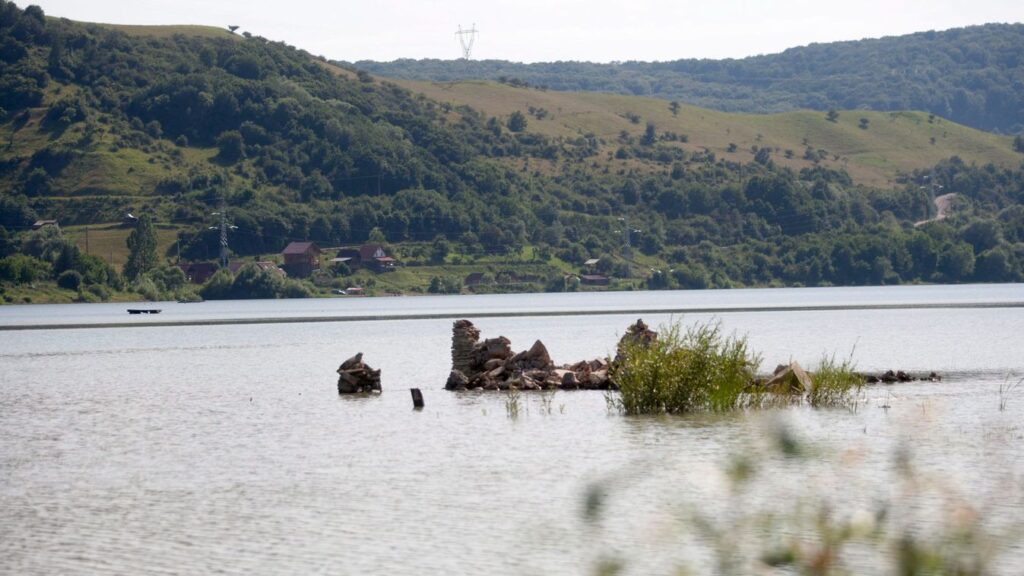
The remains of the collapsed Roman Catholic church in Maros county, in the former village of Bözödúj on June 30, 2014 (Photo: MTI Photo/Sándor Haáz)
The aim was to eliminate the Transylvanian Hungarians
The destruction of villages was protested worldwide, and an international movement was launched to protect Romanian villages. By this time, unprecedented tension had developed between the two countries within the Warsaw Pact – Hungary and Romania. In Budapest, on June 27, 1988, 70-80 thousand people demonstrated against the destruction of Romanian villages in Hősök square, in a completely unusual way from the time of the party state. In response to Hungarian concerns and Hungarian protests, communist Romania closed the Hungarian consulate in Cluj. As a result, thousands of refugees left Romania for Hungary. In the tense political situation, the new Hungarian Prime Minister, Károly Grósz met Nicolae Ceausescu completely unexpectedly in Arad on August 28, but they failed to reach an agreement on any important issue.
The settlement systematization program was finally slowed down by the Romanian leadership at the end of 1988, in which the lack of financial resources played a greater role than the international protests. The plans were then definitively canceled by the revolutionary transformation in Romania, which took Nicolae Ceausescu and his entire regime with it on December 22, 1989.
Bözödújfalu could no longer experience this. The memory of the former village is preserved only by a marble tablet, on which the names of the inhabitants and the symbols of the religions practiced in the village can be seen. The following text is written on the monument erected by Árpád Sükösd in 1995:
"Bözödújfalu rests at the bottom of the lake, the former residents of its 180 houses scattered around the world still mourn. The evil executors of the dictatorship destroyed it and flooded it, thereby ending a unique historical-religious community in which families of different nationalities and religions lived together for centuries, respecting and loving each other, in exemplary peace. Now the petitioners of the Catholic, Unitarian, Greek Catholic and Székely Sabbatarians have been silenced forever. Let this place be a place and a symbol of religious peace."
Source: MTI / hirado.hu / Magyar Nemzet / civilek.info
Front page image: Bóződújfalu church of unity, visual plan

